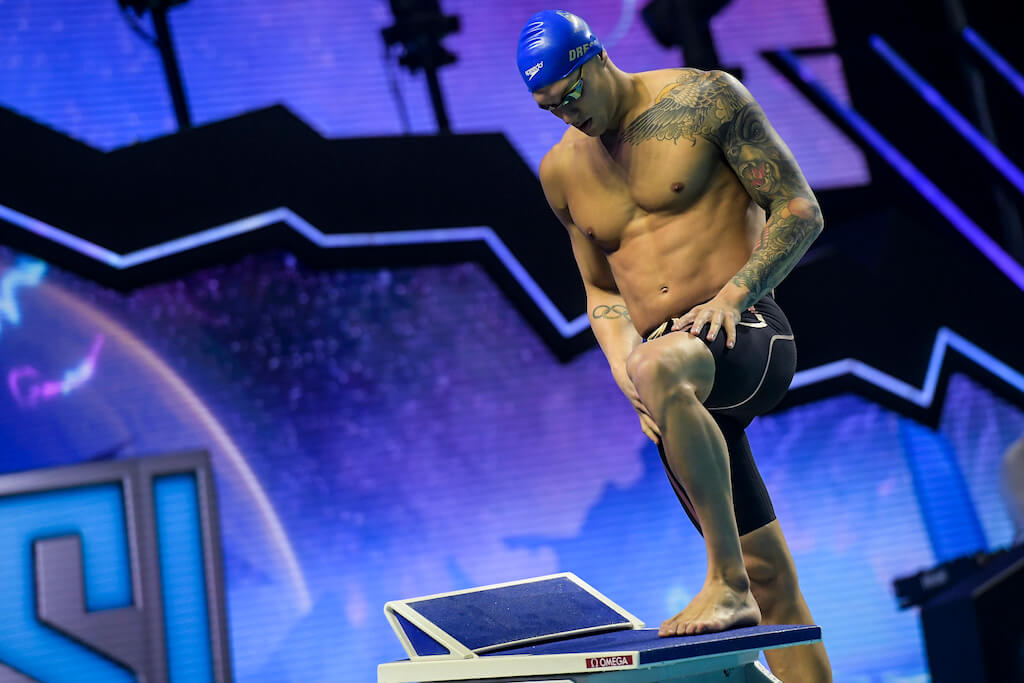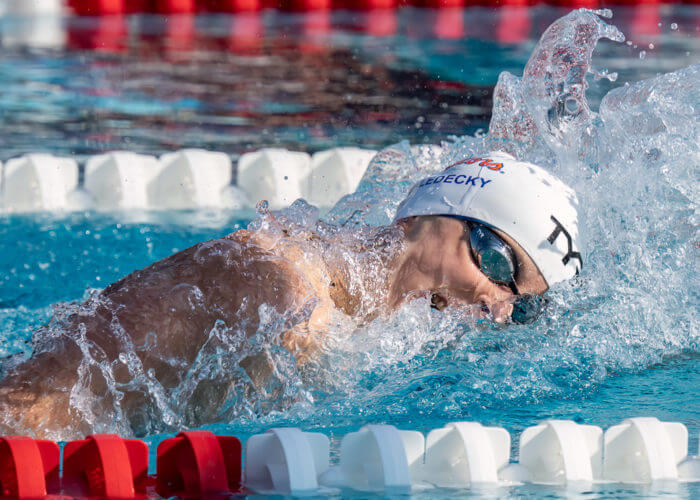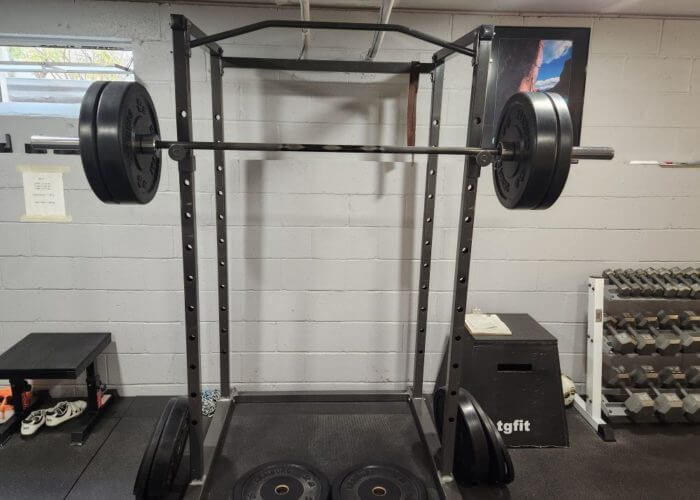The Sometimes Neglected Aspects of Swimming

The Sometimes Neglected Aspects of Swimming
On occasion, Swimming World accepts submissions from its readers. The following article was submitted by Luke Schwenk, a captain and All-American at St. Mary’s College of Maryland.
By Luke Schwenk
By many coaches across the world, swimming is regarded as just that, swimming. You show up to practice, swim laps until your lungs hurt, and go home. Far too often, the out-of-pool portion of the sport is neglected. If you feel the drive to get better, topple your competition, and rise in the rankings of the country, just showing up to the pool and doing whatever set is given to you is not enough.
Over my years of swimming, I have deciphered four of the most important aspects of swimming that are not swimming laps: active swimming, mindset, diet, and weight training.
Active Swimming

Photo Courtesy: Peter H. Bick
Active swimming is the act of keeping your mind turned on while in the pool. Anybody can get in the pool, turn off their brain, and swim. This does almost nothing for you, however. When you swim without thinking, you develop bad habits or reinforce old ones. At the very least, you will not improve.
Whether you are swimming a warmup, doing a drill or main set, or even cooling down, you should give attention to your technique. You should always make sure you maintain maximum efficiency through the water. This helps to develop good habits when you step up to the block and don’t want to think about the little things.
It can help to watch videos of the best swimmers in the world swimming in the races you are looking to improve on. You should look at these videos and try to decipher what about their starts, strokes, and turns makes them faster than you are, and try to implement these things into your technique while practicing.
Mindset
Everybody has bad races and meets, that’s the nature of swimming. However, what separates those who improve from those who don’t is often mindset. When you have a race that you felt like you did “bad,” how does that make you feel? Many people will get sad or angry and blame others. The reality is, if you wish to improve, you need to leave this mindset in the dust.
Every time you hop in the pool should be a learning experience, whether you do well or not. If you didn’t do as well as you would have liked, think through the race. Think of what went wrong and how you can do better next time. If you did well, don’t limit yourself to that. How can you do even better the next time you dive off the block? This applies to both the execution and technique that you displayed in the race as well as things outside of the race such as training, eating patterns, sleep etc.
Diet
Diet can make or break you as a swimmer. No matter how hard you work in the pool or the weight room, if you go home and eat junk (fast food, white flour, excessive fat, processed meats, sugar), you will be far less effective in transferring those hours into real improvement.
You should aim to eat things that give your body long-term energy and assist in rebuilding the muscle fibers after hard practices. This means lean proteins – chicken, turkey, pork, fish, beans – to rebuild those muscles, complex carbs – rice, pasta, potatoes – to fuel your body through hard workouts and meets, and lots of fruits and vegetables.
It is also important to note that when you are in periods of intense training, you will burn a considerable amount of calories, meaning you also need to eat LOTS of calories. Supplements like protein powder, creatine, and caffeine can also be very helpful when you are trying to improve performance.
It is perfectly okay to treat yourself occasionally, whether that be some candy or a fast food meal, but you need to help your body help you by giving it the nutrients it needs.
Weight Training

Photo Courtesy: John Lohn
I will preface this section by saying that weight training is often vastly different between distance and sprint swimmers and as a sprinter, my area of expertise resides in the sprint portion.
In my opinion, the four most important lifting movements for swimming are as follows, and in no particular order: squats, deadlifts, hang power cleans, and pullups. All exercises should be performed in different variations such as eccentric lifts – going very slowly on the down motion of the lift and exploding to the top of the motion and higher reps/lower weight. For general strength building, you should focus on between 8-14 reps in each set. For explosive power, 3-5 reps, and for weighted endurance sets, 20+.
Squats
Squats are one of the most quintessential exercises out there, and for good reason. Squats have benefits for all aspects of your race. They teach your legs the explosive nature to assist you in getting off the block, propelling you to the wall, and getting maximum power from your turn. Squats are beneficial with all weight, even just body weight. Attention should be given to both the back squat and front squat variations.
Deadlifts
Deadlifts are one of my favorite lifts. For many people, this will be their heaviest lift, meaning they can load the most weight onto the bar. Deadlifts primarily work your hamstrings and glutes but are very useful for things such as explosive hip-hinging, and core stability and strength. Explosive hip-hinging is extremely important for starts and turns because for both of these motions, your aim is to explode to a fully extended position as quickly as possible. Core stability is a HUGE part of swimming as it is the basis to all of your strokes and helps to prevent injury.
For all lifts, proper form is incredibly important and before loading up heavy weights, the form should be mastered with a light load. This is even more so for deadlift as improper form can lead to serious lower back injury. Make sure to keep your back straight and your shoulders and lats flexed throughout the whole motion.
Hang Power Cleans
Hang power cleans are the most explosive motion on this list. The nature of this lift needs to be explosive or it will not work. Hang power cleans work the hamstrings, glutes, traps (muscle that connects your shoulder to your neck), rhomboids (muscle that pulls your shoulder blades towards your spine), and your core. This movement is extremely helpful in developing speed and builds many of the important muscles for swimming. The motion teaches explosive hip-hinging even more so than the deadlift but is done with much lower weight.
This motion is not a natural one and takes lots of practice before it can be mastered. However, once you figure it out, it can have massive benefits for your swimming times. A video is the best way to view the motion as this is the most complicated lift on this list.
Pullups
Pullups are a fundamental exercise that will prove widely beneficial. It is an exercise that directly translates to the motion that your arms take to propel yourself forward in the water. This is because pullups build your lats – the primary muscle in the pulling motion of the stroke. Improvements in pullup strength will often directly correlate to producing more power in the water and thus faster times. Like all the other exercises on this list, pullups should be performed in many variations which include chinups.
Many people struggle to perform even one successful pullup. If this is the case, stationary hanging from the bar in a flexed pullup position can be used to build strength. Also, if your gym has one, assisted pullup machines as well as lat pulldown machines can be used to build a base of strength. Assisted pullup machines are also great to train pullups under fatigue after a few sets have already been performed.
Many swimmers and coaches focus on work in the pool. Swimming laps is a key part of your training, but real improvement in the pool requires much more attention. Active swimming is an essential aspect of your in-pool training. Thinking about your technique is essential to building good habits and eliminating bad ones. Changing your mindset can have drastic effects on your results in the pool. If you fear failure and break down when it comes, you will never be able to realize your full potential. Proper diet can make a good swimmer into a great swimmer. Without providing your body with the proper nutrients to grow, how can you expect your times to improve? Swimmers often dread dryland, but proper weight training can be very rewarding. Improvements in the weight room often will correlate to improvements in the pool. To become a successful swimmer, you not only need to swim laps, but maximize your time in and out of the pool.



